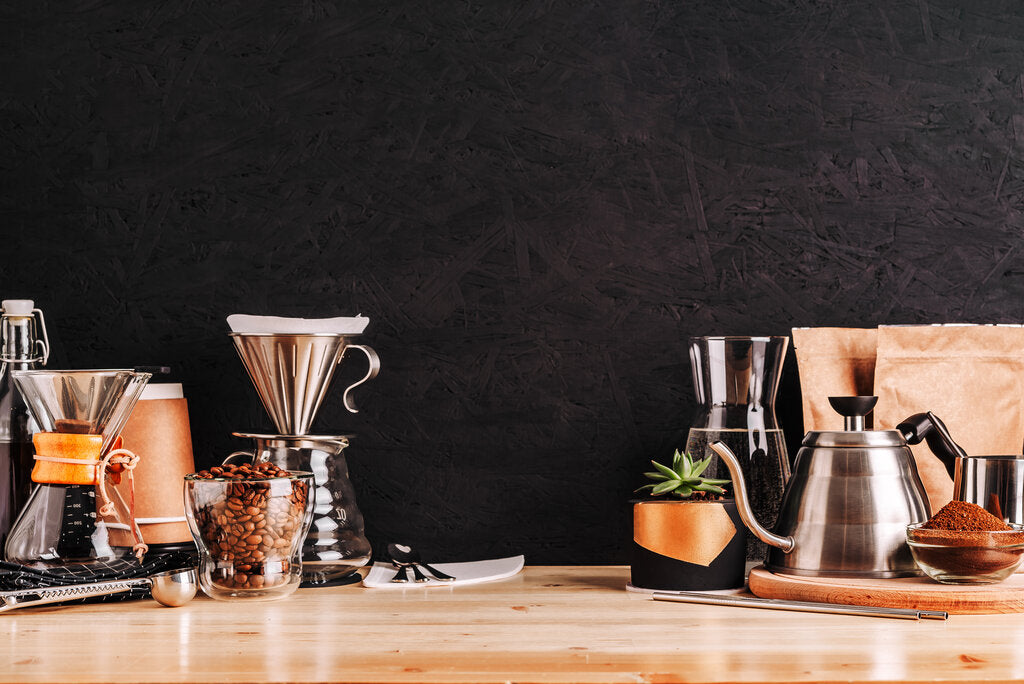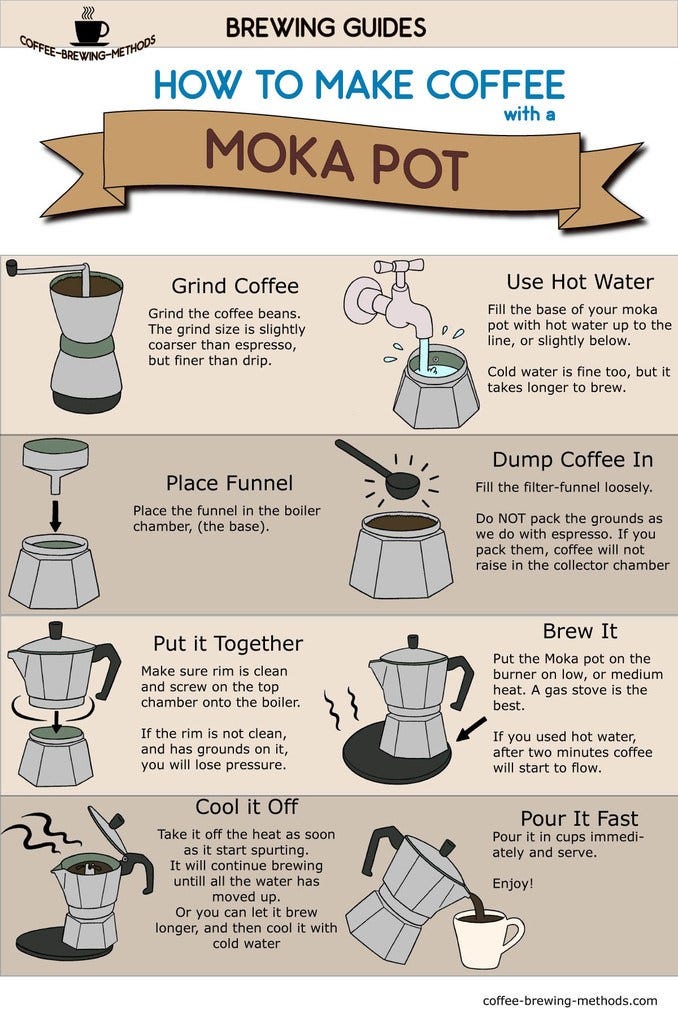Revealing the Science Behind Different Coffee Brewing Methods and Their Advantages
Revealing the Science Behind Different Coffee Brewing Methods and Their Advantages
Blog Article
Comprehending Different Coffee Developing Methods for a Richer Taste Experience
A comprehensive understanding of various coffee brewing methods can greatly influence your flavor experience, revealing the detailed subtleties of this precious drink. As you consider which come close to ideal fits your taste preferences, the inquiry continues to be: just how do these techniques influence the last mug, and which might raise your coffee experience to new elevations?
Drip Coffee Machine
While lots of coffee lovers appreciate the subtleties of various brewing methods, the drip coffee maker continues to be a staple in offices and houses as a result of its simpleness and performance. This device runs by home heating water and enabling it to move via coffee grounds, extracting flavors and oils, which after that trickle right into a pitcher listed below.
The drip coffee manufacturer is favored for its capacity to brew numerous mugs at as soon as, making it suitable for active mornings or events. Individuals can quickly personalize the strength of their coffee by readjusting the quantity of coffee grounds utilized or choosing a brew toughness setting located in lots of modern equipments. Furthermore, programmable features permit users to establish a timer, making certain a fresh pot of coffee prepares upon waking.
Upkeep is fairly straightforward, as the majority of drip coffee machine need periodic cleansing to remove mineral accumulation. Many designs are also furnished with features such as automobile shut-off, which enhances security and power efficiency. Eventually, the drip coffee machine uses a user-friendly and reputable alternative for those looking for a consistent and satisfying coffee experience without the intricacies of more fancy developing approaches.

French Press
The French press uses a distinctive brewing experience that contrasts dramatically with the automatic procedure of a drip coffee machine. This manual technique enables an intimate communication with the coffee-making procedure, offering customers better control over various parameters, such as steeping time, coffee-to-water ratio, and grind size.
To brew coffee using a French press, coarsely ground coffee beans are steeped in hot water for approximately four minutes. This immersion strategy removes abundant oils and tastes from the coffee, causing a robust beverage that highlights the nuances of the beans used. The metal or nylon mesh filter of the French press allows crucial oils to continue to be in the mixture, adding to its durable flavor profile.
When using a French press, it is important to take note of the brewing time and water temperature, as these factors significantly influence the final taste. Experimentation with different coffee varieties and soaking periods can lead to a customized flavor experience. Overall, the French press is a rewarding and obtainable approach for coffee lovers seeking to grow their recognition for the complexities of their favorite drink.
Pour-Over Methods
Pour-over techniques boost the coffee brewing experience by permitting exact control over every aspect of the procedure, from water temperature level to pouring strategy. This technique involves by hand putting warm water over coffee premises in a filter, usually positioned in a dripper, which permits optimal removal of flavors.
To start, choosing the appropriate coffee grind is critical; a medium to medium-fine work functions best to guarantee correct water flow and extraction (coffee brewing methods). Next off, water temperature must preferably range in between 195 ° F and 205 ° F, as this array extracts the most effective flavors without scalding the coffee
The putting strategy additionally plays a vital role. A slow, circular motion when saturating the grounds can assist equally essence oils and flavors. It's typically recommended to permit the coffee to grow for 30 secs after the first pour, which lets co2 retreat and enhances flavor advancement.
Coffee Machines
For you can try here those seeking a different yet just as gratifying developing experience, coffee devices provide an one-of-a-kind approach of coffee preparation that emphasizes stress removal. This process includes compeling warm water via finely-ground coffee at approximately 9 bars of pressure, resulting in a concentrated shot of espresso that showcases rich flavors and aromas.

The top quality of coffee is influenced by several factors, consisting of work size, dose, water temperature level, and removal time. Accomplishing the ideal espresso shot calls for method and interest to detail. In addition, the espresso functions as a base for numerous coffee drinks, such as lattes, coffees, and Americanos, making it a flexible choice for coffee fanatics.

Cold Mixture Methods
Cold mixture coffee has gained appeal for its smooth, low-acidity profile and revitalizing preference, making it an excellent option for warm Our site climate or those sensitive to typical developing methods - coffee brewing methods. The procedure of cold developing usually involves steeping coarsely ground coffee beans in cold or space temperature level water for a prolonged duration, typically 12 to 24 hours. This technique extracts flavors in a different way than warm water, causing a rich, intricate mixture that highlights chocolatey and fruity notes
There are various cold mixture approaches offered, consisting of immersion and drip brewing. The immersion technique is one of the most straightforward; just combine coffee and water in a container, let it high, and then strain the premises. Conversely, the drip approach utilizes a customized coffee machine to slowly leak water via coffee grounds, enabling an extra regulated extraction process.
No matter of the approach chosen, the coffee-to-water ratio is critical, read the article usually advised at 1:4 for a focused brew that can be watered down with water or milk before offering (coffee brewing methods). Cold mixture can be offered over ice, combined with flavored syrups, or used as a base for different coffee beverages, using convenience and a distinct taste experience
Verdict
In conclusion, discovering numerous coffee developing approaches considerably enriches the flavor experience. Involving with these varied developing processes not only boosts admiration for coffee's complexity yet also equips people to customize their coffee enjoyment according to personal preferences.
Customers can easily customize the stamina of their coffee by adjusting the quantity of coffee grounds made use of or picking a brew toughness establishing found in many modern equipments. Eventually, the drip coffee maker supplies a straightforward and reputable option for those looking for a consistent and delightful coffee experience without the complexities of even more sophisticated brewing approaches.
To brew coffee utilizing a French press, coarsely ground coffee beans are soaked in hot water for approximately 4 minutes. Alternatively, the drip approach makes use of a customized coffee maker to slowly trickle water via coffee grounds, enabling for an extra regulated extraction process.
Involving with these diverse developing refines not only improves gratitude for coffee's intricacy yet likewise encourages individuals to tailor their coffee pleasure according to individual preferences.
Report this page